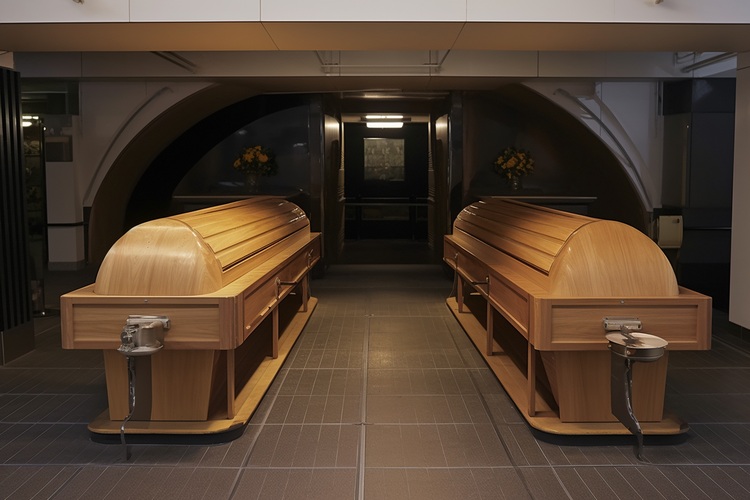How Cremation Works: Full Process Explained Step-by-Step
Cremation has become an increasingly common choice for end-of-life arrangements, yet many people remain unfamiliar with exactly what happens during the process. Understanding cremation can help families make informed decisions during difficult times and provide peace of mind knowing what to expect. This article breaks down the entire cremation journey from the moment of death through the final disposition of remains, explaining each step in clear, straightforward terms to demystify this important service.

What is the Cremation Process Step by Step?
The cremation process follows a structured sequence of events that begins after a person passes away. First, the deceased is transported to the funeral home or crematorium where identification procedures take place. The body is carefully tagged with identification that will remain throughout the entire process, ensuring proper tracking. Any medical devices containing batteries, particularly pacemakers, must be removed as they can explode when exposed to high temperatures.
Before cremation can proceed, legal documentation must be completed. This typically includes a death certificate signed by a medical professional and cremation authorization forms signed by the next of kin or designated representative. Some jurisdictions also require a waiting period of 24-48 hours between death and cremation. Once all paperwork is finalized, the body is prepared for cremation, which may involve bathing and dressing the deceased in simple, combustible clothing.
What Happens During Cremation Itself?
The actual cremation takes place in a specially designed furnace called a cremation chamber or retort. The body is placed in a combustible container—typically a simple wooden or heavy cardboard casket—and then into the chamber. Modern cremation chambers are computer-controlled and reach temperatures between 1400-1800 degrees Fahrenheit (760-980 degrees Celsius).
During the process, organic matter is reduced to basic chemical compounds through oxidation and evaporation. Contrary to popular belief, flames don’t directly contact the body; instead, the extreme heat causes the body to break down through a process called thermal decomposition. Throughout cremation, the chamber operator may periodically check and reposition any remaining bone fragments to ensure complete processing.
After the primary cremation is complete, the chamber cools, and the cremated remains—primarily bone fragments—are collected. These fragments are then processed in a machine called a cremulator, which pulverizes them into the fine, sand-like consistency commonly known as “ashes.” The cremated remains typically weigh between 3-7 pounds for an adult, depending on the individual’s bone structure and size.
How Long Does the Cremation Timeline Take?
The complete cremation timeline varies based on several factors, but generally follows a predictable schedule. From the time of death until the cremation actually takes place, families can expect a waiting period of 24-72 hours. This time allows for legal documentation, any desired viewing or services, and mandatory waiting periods required by law in many areas.
The cremation itself typically takes 1-3 hours depending on factors such as body size, chamber temperature, and efficiency of the equipment. Following the cremation, the cooling period lasts approximately 1-2 hours before the remains can be safely handled. Processing the cremated remains through the cremulator takes an additional 20-30 minutes.
From there, placing the processed remains into a temporary container or permanent urn requires about 15-30 minutes. In total, from death to the return of cremated remains to the family, the process typically takes 7-10 days, though expedited services may be available in some circumstances.
What Should Families Know When Preparing for Cremation Services?
Families preparing for cremation should understand they have many options for personalization. Contrary to common misconception, choosing cremation doesn’t limit memorial opportunities. Families can still hold a traditional viewing or funeral service before cremation, a memorial service after cremation, or both. Many crematoriums offer witnessing options where family members can be present at the beginning of the cremation process if desired.
Personal items can sometimes be cremated with the body, though restrictions apply for environmental and safety reasons. Non-combustible items like jewelry should be removed beforehand. Families should also consider their plans for the cremated remains—options include keeping them in an urn, burying them in a cemetery plot or cremation garden, scattering them in a meaningful location (where legally permitted), or dividing them among family members in keepsake urns.
It’s advisable for families to discuss cremation wishes with their loved ones before need arises. Pre-planning cremation arrangements can alleviate decision-making pressure during times of grief and ensure personal wishes are honored.
Understanding Cremation vs Burial: Key Differences
When comparing cremation and traditional burial, several key differences help families make informed decisions for their loved ones. Cost is often a significant factor—cremation typically costs less than burial because it eliminates expenses for caskets, burial vaults, and cemetery plots. However, adding services like viewings, ceremonies, and permanent memorialization can increase cremation costs.
Environmental impact varies between the options. While cremation requires energy and produces carbon emissions, traditional burial involves land use and the placement of non-biodegradable materials underground. For the environmentally conscious, green burial alternatives or biodegradable urns for cremated remains might be considerations.
Space requirements differ substantially between the options. Traditional burial necessitates a cemetery plot, whereas cremated remains occupy minimal space and offer flexibility for final disposition. This flexibility extends to memorial options as well—cremation allows families to divide remains among relatives, incorporate them into memorial objects, or scatter them in meaningful locations.
Religious considerations also play a role in the decision. While many religions now accept cremation, some faiths maintain strong preferences for either burial or cremation. Jewish, Islamic, and Eastern Orthodox traditions generally favor burial, while Hindu and Buddhist traditions typically prefer cremation.
Ultimately, the choice between cremation and burial is deeply personal, involving considerations of cost, environmental impact, cultural traditions, religious beliefs, and individual preferences.
Cremation continues to grow in popularity for its simplicity, affordability, and flexibility. By understanding the complete process and available options, families can make decisions that honor their loved ones while respecting their values, beliefs, and wishes.




